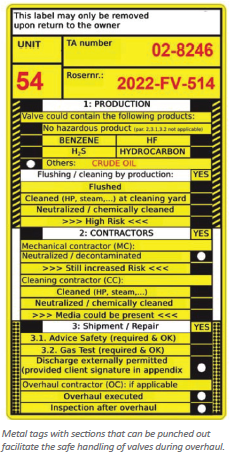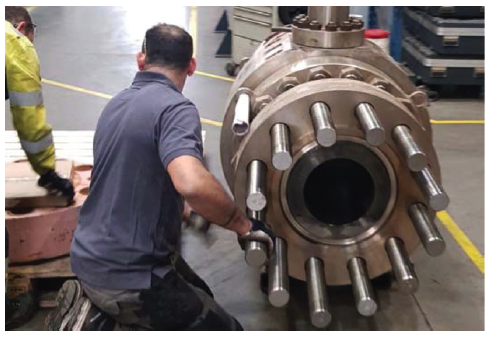Shutdowns – those planned outages required to conduct inspections, repair equipment, and comply with regulations – can be stressful times for all concerned. Having assisted with all manner of valve-related activities during numerous shutdowns, Colin Zegers has some simple yet powerful words of advice: take planning seriously and start well in advance, as proper planning makes for a more efficient shutdown and a quicker plant start-up.
By KCI Editorial
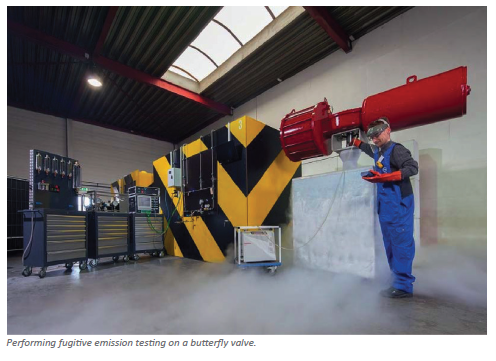
Mr Zegers’ recommendation to start planning shutdowns well in advance is, of course, based on his career-long experiences. During this time, he has seen planning become more and more of an afterthought. “Recently, for example, we were called in to provide assistance during a scheduled outage. We were brought in just a few months prior to the job and were additionally told that all preparation would need to be completed in just four weeks! That was a very challenging timeframe to say the least!”
It would have been better all round, he continues, if he and his team had been approached fully twelve months prior to the shutdown. “We could then have assisted in properly preparing the shutdown. For example, by identifying those valves not requiring maintenance, highlighting valves which could be repaired in-situ and especially in spotting those which needed to be removed from the line and taken to a workshop for thorough repairs. Also, we could have helped to plan workshop capacity. Your local shop may do a perfect job overhauling say twenty control valves a week, but you cannot expect them to suddenly process five or ten times that number in the same timeframe.”
Conducting a value audit well in advance would also enable any necessary spares to be ordered in good time, allow workshops to reserve capacity for the tasks ahead, and also for transport and logistics to be scheduled. “Some valves, especially when fitted with actuators, can be incredibly large and heavy, so you do have to stop and consider how they will be transported,” states Mr Zegers. “In some cases, the workshop could even need to bring in a heavy-duty crane. If you are working against a tight deadline, it is easy to overlook such basic but essential details, which can otherwise cause serious delays.”
Facing the Unexpected
In many sectors, it seems to have become the norm for companies to extend the time between scheduled outages. Whilst understandable in terms of boosting plant uptimes, this trend can add extra complications to the shutdown, notes Mr Zegers. “This development has been exacerbated by the COVID-19 pandemic, when plants were understandably reluctant to have people on site unless absolutely necessary. Whatever the cause, the result can be increasing wear and tear on valve components, meaning that simple repair jobs can become more complex and time-consuming.”
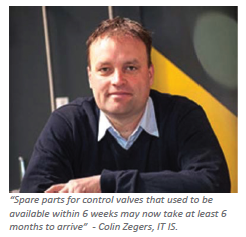
From time to time, Mr Zegers also faces unexpected issues, such as corrosion in valves which had previously gone from shutdown to shutdown without needing maintenance. “In such cases it could well be that the process medium flowing through that particular pipework has changed since the time the plant was set up. Or perhaps the valve was not properly selected. That could be the type of valve, the (internal) materials or the Cv value in the case of a control valve. During the specification process it is most important to consider all the materials that the plant designer indicates might potentially be flowing through the valve. Simply looking at the pressure and temperature ranges is certainly not enough.”
While discussing media, Mr Zegers notes that another issue which is occurring more and more regularly is failures in trunnion mounted ball valves. “The problem here seems to be caused by the medium in the installation such as certain types of crude oil. If oil conglomerates behind the seats, it can cause the valve to stick and/or lead to in-line leakages.” Fortunately, there are solutions, continues Mr Zegers. “Options could be to fit a steam jacket or to consider using a different type of valve. For example, a rising-stem ball valve.”
Asked about the origins of this type of problem, Mr Zegers indicates that refineries may have switched to a different supply source. “Crude oil is not a consistent commodity. Each well can produce oil with unique characteristics such as impurities and in fact even oil from the same well can change from sweet to sour over the course of time. I have seen hydrogen (sulphide) cause major issues with valve materials such as chrome or nickel-plated balls, for example.”
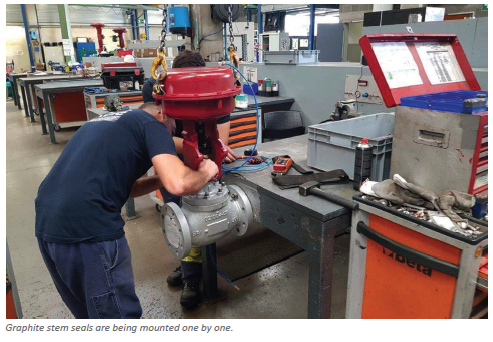
Reducing Bottlenecks
Whatever the challenges, Mr Zegers remains passionate about his job and is determined to keep finding new ways to help maintain valve populations in perfect working order.
“As stated, it can take quite a time for manufacturers to produce parts for certain valves. One solution going forward could be to make more use of additive manufacturing. Even better would be if the repair shop itself could be authorized to 3D print the necessary parts, thereby eliminating transport delays. This is an option which I would really like to discuss with the valve makers.”
Another benefit might accrue if manufacturers could agree on standards for components such as valve stems, suggests Mr Zegers.
“Right now, valve stems, cages, plugs, membranes, actuators, and positioners can be found in a wide variety of brands, type and sizes. So, suppose valve makers were to agree to restrict sizes of some parts to a limited number. Yes, that would mean slightly more cost if instead of a 16 mm stem the manufacturer uses a 20 m stem. But having fewer sizes would streamline manufacturing and also make it more attractive for manufacturers as well as stockists to keep inventories. And having ready access to parts would be a major benefit during a shutdown.”
Independent Monitors
Mr Zegers is well-known throughout the valve industry, having set up a Dutch company that specializes in valve testing and inspection. However, he indicates that he is being increasingly approached by end users to act as an independent auditor and controller during shutdown activities. “Despite the fact that we do not advertise this type of work, we are receiving more and more requests from chemical and petrochemical companies to be the eyes and ears of the asset owner in the overhaul shops.” Plants may of course decide to call in an expert like Mr Zegers, knowing that their own staff will be hard-pressed as it is during a shutdown. And that is quite understandable, given the wide scope of activities Mr Zegers is often tasked with. These vary from supervising safety, planning, sequence, progress, cost control, overview, parts supply, repair(s), QA/QC, testing, additional work, shipment, and more. In addition, this can necessitate monitoring the work of multiple revision shops. The number and variety of valves involved can also be daunting to the inexperienced, taking in on/off valves, control valves and safety valves. “In short, we ensure that a valve is overhauled correctly, in the shortest possible time and within budget so that the valve can be quickly reassembled so that it can be used until the next turnaround,” concludes Mr Zegers.
